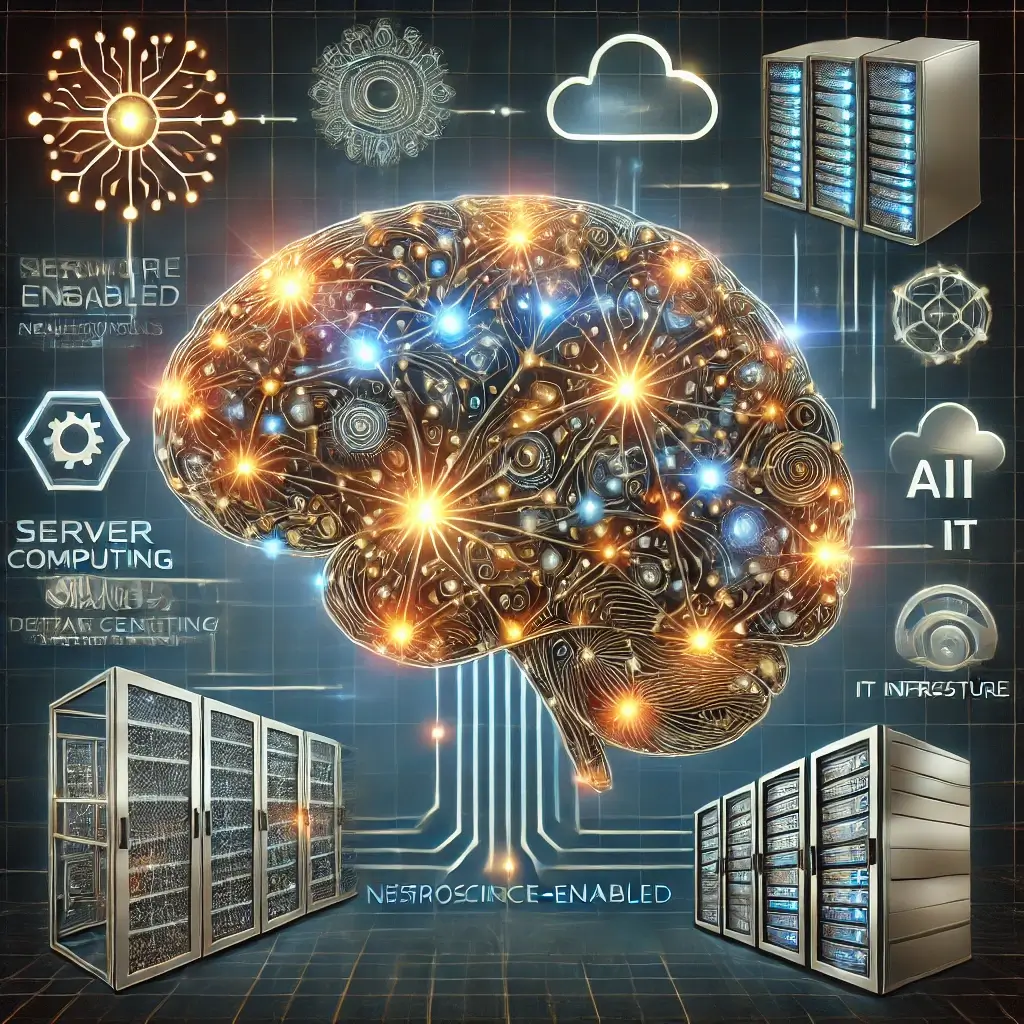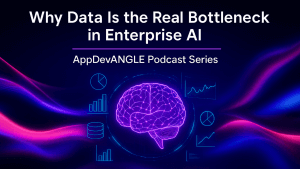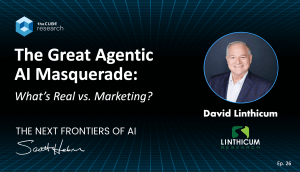In today’s increasingly complex and distributed IT environments, AIOps (Artificial Intelligence for IT Operations) is emerging as a game-changing technology. In this Analyst ANGLE theCUBE Research explored the transformative potential of neuroscience-enabled AIOps with Casey Kindiger, CEO of Grokstream, and Josh Kindiger, President of Grokstream. The discussion provided insights into the evolution, challenges, and future of AIOps in enterprises and beyond.
Why AIOps Matters
As modern IT systems become more distributed and interconnected, they often exceed human capabilities to monitor and manage them effectively. As a result, organizations increasingly recognize the benefits of AIOps, including improved operational efficiency, faster issue identification, and quicker remediation.
Ideally, AIOps enables organizations to shift from a reactive to a proactive and even predictive approach, but achieving this transformation takes time and the right strategies.
Grok’s Journey to Neuroscience-enabled AIOps
Casey Kindiger highlighted Grok’s evolution from anomaly detection to a fully-fledged AIOps platform. The journey began with lessons learned from a previous venture. “In the late ‘90s and early 2000s, Josh and I were scaling a consulting firm focused on deploying cutting-edge technology to help enterprises manage their growing networks,” Kindiger said. Despite their success, they realized many engineers were still bogged down with repetitive tasks. “We hypothesized that if we made it easier to automate those tasks, everything would improve. But that hypothesis turned out to be a design trap.”
After selling their company, Casey and Josh embarked on a mission to rethink IT automation. A pivotal moment came when Casey read Jeff Hawkins’ book On Intelligence[1]. Inspired by the book and subsequent discussions with Hawkins, the Kindigers recognized the potential of using neuroscience principles to guide AI development. “Biology became our roadmap for building intelligent systems,” Casey explained.
Building a Smarter Platform
The biological inspiration led Grok to prioritize anomaly detection as its foundational capability. By using models initially developed by Hawkins’ team, Grok began addressing the core challenges of IT operations. “We avoided the trap of relying on static rules or topology-based inference,” Casey said. Instead, the team focused on leveraging AI to deliver scalable and adaptive solutions.
This approach required significant upfront investment. “We spent three full years in research before offering even a beta version of our product,” Casey noted. The result was a platform capable of addressing the volume, variety, and complexity of modern IT data.
The Neuroscience-Inspired Approach
Grok’s architecture draws heavily from the human brain’s ability to process vast amounts of sensory data. “The brain eliminates noise and organizes information for actionable insights,” Casey explained. Grok mimics this by clustering related anomalies and filtering out irrelevant data. This approach enables organizations to focus on meaningful alerts while reducing noise.

Josh Kindiger elaborated on how this design philosophy impacts scalability. “We built the platform to handle millions of unique alarms and symptoms, ensuring it remains adaptable in complex, multi-domain environments,” he said. This scalability is particularly critical for managed service providers (MSPs) and cloud service providers (CSPs) that manage diverse customer environments.
Overcoming Cultural Barriers
Deploying AIOps is not just a technological challenge but also a cultural one. “Time to comfort”—the period it takes for operators to trust and rely on AIOps—is a critical factor. According to Josh, Grok addresses this by providing explainable AI outputs. “We summarize ML outputs in human-readable formats, helping operators understand why certain alerts are grouped and what actions to take,” he said.
The deployment process often starts with a pilot phase, either live or using historical data. “When we use historical data, customers see immediate value because Grok’s brain is pre-trained,” Josh explained. For new environments, Grok begins showing results within days and quickly ramps up to 80-95% efficacy within three months.
Moving from Reactive to Predictive
Grok’s ultimate goal is to enable organizations to transition from reactive firefighting to proactive and predictive operations. While not all incidents are predictable, Grok excels at identifying patterns that indicate potential issues. For example, by analyzing low-severity alarms often ignored in traditional setups, Grok provides early warnings.
“We’ve also introduced algorithms that predict recurring incidents based on historical patterns,” Josh said. This proactive problem identification helps organizations address issues before they escalate.
Extending AIOps Beyond IT
As Grok continues to innovate, it is expanding its AIOps capabilities to new domains. The introduction of Grok Guru, an augmented AI interface, marks a significant step in this direction. “Our first version of Grok Guru summarizes ML outputs,” Casey said. “Future iterations will integrate vendor knowledge articles and other resources, further reducing the need for human intervention.”
The company’s broader vision involves democratizing automation. “We want to enable engineers to focus on creative work while minimizing the number of specialists required to maintain infrastructure,” Casey emphasized.
The Road Ahead
The future of AIOps lies in its ability to adapt and scale across diverse environments. As Casey pointed out, the integration of Large Language Models (LLMs) and AI-driven insights will play a pivotal role. “We’re focused on driving operational efficiency and ensuring our platform evolves to meet the changing needs of enterprises,” he said.
Josh added that the platform’s agility and constant innovation remain core strengths. “We’re continually learning from our customers and refining our approach to extend AIOps capabilities beyond traditional use cases,” he said.
My ANGLE
Grok’s neuroscience-enabled AIOps provides a differentiated approach to IT automation. The company has been working for almost a decade focused on developing technology that can scale, is adaptable, and, most importantly, provides clear and straightforward results.
As the demand for AIOps technologies continues to grow, Grok is well-positioned to enable organizations to transform how they manage their infrastructure and create a more automated and efficient IT environment.
For more information on Grokstream, please visit their website. Grok Makes AIOps Simple for Modern IT
[1] On Intelligence: How a New Understanding of the Brain Will Lead to the Creation of Truly Intelligent Machines: Jeff Hawkins, Sandra Blakeslee: 9780805078534: Amazon.com: Books



